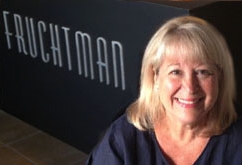Articles and News
The Luxury Jewelry Market Is Changing. How Do You Change With It? Part 1: Marketing | November 11, 2015 (0 comments)

Merrick, NY—While every year brings change, this year seems to have brought more than most. At The Centurion, we know the retail landscape continues to evolve. To help you start out 2016 on the best note, we asked a variety of industry experts for their take on dealing with these changes. Each replied from their own viewpoint, offering strategies and insights into the changes the year ahead will bring. Our first installment comes from Ellen Fruchtman, president of Toledo, OH-based Fruchtman Marketing.
“The biggest change in advertising can be summed up in two words: digital and fragmentation. The proliferation of digital has changed the way customers think and shop. Because of it, there is virtually no loyalty. Because of it, there is complete transparency. They know what they want. They know exactly what it costs. Right now, they prefer to make a larger purchase in person. But, that could easily change over the years, as this new emerging customer is less timid about purchasing a high dollar figure online. Technology is the game-changer.
As it relates to fragmentation, with so many media avenues and channels to reach potential consumers, the local retail jeweler is finding it difficult to effectively reach that consumer on limited budgets. Much of that, again, goes back to digital.”
The Centurion: How do you deal with that change?
Ellen Fruchtman: Step one is to embrace this new world of marketing. If you continue to do what you have done, you will net the same results. I believe they call that the definition of insanity. Marketing avenues are changing faster than the speed of light. Imagine, Facebook only started in 2004 and has 1.3 billion active users, and 65% of those use it every day! Compare that to the NBC Network, which started in 1926 and the largest viewed single program (Super Bowl XLIX) which had 114 million viewers.
Step two is to have clearly defined objectives of who your most profitable customer is; who you want to target (based on sound business strategy); and take the necessary steps to build a cohesive long-term plan (not one that takes you one month at a time) to obtain those objectives. Don’t be persuaded by the next shiny penny and be careful about some of the research you read and statistics.
Consider: Not every platform is right for you or the best way to reach your customer. Does the research address the fine jewelry buyer? Or is it based on “jewelry” buyers, which can include costume jewelry, too. Does it make sense with limited dollars and limited time to swim in the pond with the little fish or big fish? Remember the pitfalls of fragmentation. Media is all about reach and frequency of message. You can say something in any number of places, but that doesn’t mean it will necessarily be heard enough to resonate.
This isn't easy, but it also isn't as complicated as it might sound. To have any sort of strategy you do have to put in a little effort. For marketing specifically, you’ll need to:
- Decide on a yearly budget. Should be anywhere between 5%-8% of sales. Variable based on the cost of their market and what they need to achieve. But, at the very least, set the number you're comfortable with.
- Determine your top 3-4 objectives. For example, if you want to increase bridal from 15% to 35% in 2016; increase frequency of visit from existing customers; sell more higher ticket fashion etc.
- To build the budget you have to allocate those dollars to various areas where you feel will move the needle for those top 3-4 objectives.
- Break out the spending be it for media...digital initiatives or events -- again based on 1-4 (objectives) and what's the most important.
If you see that you don't have enough money to adequately move the needle for four objectives, then perhaps you start with one or two. Do something well to provide enough exposure so you don't dilute the message.
Step three is to fully understand what your “new” customer looks like and their expectations. People want to shop (browse) online. Is your website easy to navigate? Do you have enough products with brief descriptions and pricing? They are not there to read about your history; albeit important to you (see step four).
If, for example, you’re looking for the bridal customer, this new bridal customer:
- is looking/browsing/researching for at least four months;
- is gathering most of their data online; and
- has a clear expectation of what they can afford to spend.
If you are only promoting bridal inconsistently, you will not reach them. If you don’t clearly show your pricing online (and you should be considering some pricing in-case), you won’t connect with them.
Step four is to deliver their needs, not yours. Take the bridal customer, again. A significant percentage are looking for some level of custom. Do you offer that service? Most customers overall are looking for some exceptional experience. Are you that different than your competitor down the street? Do you buy product to satisfy your needs or theirs?
Retailers who are not nimble and open to making important decisions with their marketing will sadly join the ranks of the over 500 retailers who have closed this year alone.







